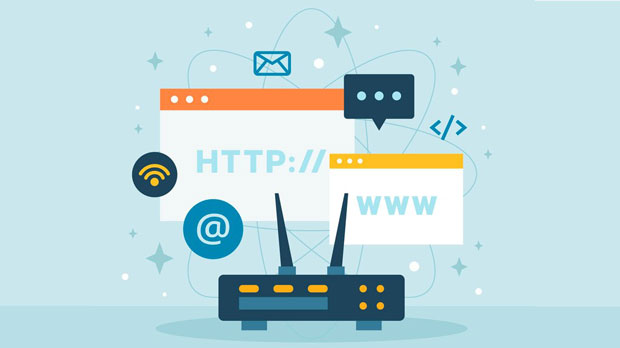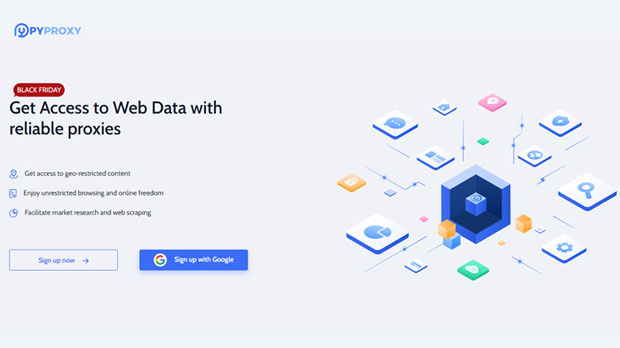In today’s digital world, online privacy and security have become more crucial than ever. Many individuals and businesses use proxies to mask their IP addresses, ensuring anonymity and security during internet browsing. Among various proxy protocols, SOCKS5 has gained popularity due to its strong security features. However, PYPROXY has recently emerged as a competitor, promising advanced capabilities in terms of anonymity and user experience. In this article, we will explore a detailed comparison between SOCKS5 anonymity and PyProxy to determine whether PyProxy truly outperforms traditional proxy solutions like Poxy Proxy. 1. Introduction to Proxy Types and AnonymityBefore diving into the comparison, it is essential to understand what SOCKS5 and PyProxy are and how they contribute to online anonymity. SOCKS5 is a versatile protocol that facilitates internet traffic by routing it through a third-party server, allowing users to mask their IP addresses. On the other hand, PyProxy is a newer proxy solution that integrates advanced encryption and privacy features. Understanding the key differences and similarities between these two options is crucial for making informed decisions about online security.2. SOCKS5 Protocol OverviewSOCKS5 (Socket Secure version 5) is one of the most widely used proxy protocols for achieving anonymity online. It works by intercepting internet traffic and routing it through a proxy server, masking the user's IP address. SOCKS5 supports a variety of protocols, including TCP and UDP, which makes it suitable for different applications such as web browsing, gaming, and streaming.One of the key strengths of SOCKS5 is its versatility in handling various types of internet traffic. Unlike HTTP proxies that only support web browsing, SOCKS5 can be used for a broader range of online activities. It also provides better security features compared to its predecessors, such as SOCKS4, by supporting authentication methods and offering higher performance.Despite its advantages, SOCKS5 is not perfect. It offers basic anonymity by masking the user's IP address but does not provide encryption for data transmitted through the proxy server. This means that while it hides your IP, your data can still be intercepted or monitored by third parties.3. PyProxy: A New Generation ProxyPyProxy is a more recent proxy solution that aims to provide superior anonymity and security compared to traditional proxy protocols like SOCKS5. Unlike SOCKS5, PyProxy incorporates advanced encryption mechanisms that ensure not only anonymity but also data protection during internet activities.One of the standout features of PyProxy is its ability to provide end-to-end encryption for internet traffic, which SOCKS5 lacks. This encryption ensures that sensitive data, such as login credentials, personal information, and browsing history, is securely protected from hackers and government surveillance. Additionally, PyProxy offers faster speeds and better reliability, making it a more attractive option for those concerned about both privacy and performance.Moreover, PyProxy includes enhanced features such as automatic IP rotation and support for multiple protocols, further enhancing its utility and flexibility. It is designed to work seamlessly with a variety of devices, including desktops, mobile phones, and even IoT devices, making it an excellent choice for users with diverse security needs.4. Anonymity Comparison: SOCKS5 vs PyProxyWhen it comes to anonymity, both SOCKS5 and PyProxy excel in different areas. SOCKS5 provides a solid level of privacy by masking your IP address, which prevents websites from tracking your location and identity. However, as mentioned earlier, it lacks encryption, leaving your online activities vulnerable to interception.On the other hand, PyProxy goes a step further by not only masking your IP but also encrypting your data traffic. This means that even if your data is intercepted, it remains unreadable due to the strong encryption applied by PyProxy. This additional layer of security makes PyProxy a much safer choice for users who prioritize online anonymity.Moreover, PyProxy offers features like IP rotation, which regularly changes the IP address that is used to connect to the internet. This further enhances anonymity by making it more difficult for websites or third parties to track your online behavior over time.5. Performance and Speed: PyProxy vs SOCKS5While anonymity and security are vital, performance and speed are also important factors to consider when choosing a proxy solution. SOCKS5 is known for its relatively high speeds, as it does not apply any encryption to traffic. This makes it suitable for activities that require low latency, such as online gaming or streaming.PyProxy, however, provides end-to-end encryption, which can potentially slow down internet speeds. That said, modern implementations of PyProxy have been optimized to minimize speed loss, offering competitive performance even with encryption enabled. In fact, many users find PyProxy’s performance to be on par with SOCKS5, thanks to its advanced network infrastructure and optimization techniques.The trade-off between speed and security ultimately depends on the user’s needs. For those who prioritize anonymity and data protection, PyProxy is the clear winner, even if it comes with a slight decrease in speed. For users who are more concerned with speed and are willing to sacrifice some level of security, SOCKS5 may be the better choice.6. Security Features: Which Proxy Is Safer?When comparing the security features of SOCKS5 and PyProxy, it becomes clear that PyProxy is superior in terms of overall protection. While SOCKS5 provides basic privacy by hiding your IP address, it does not encrypt the data passing through the proxy. This makes it vulnerable to data interception and man-in-the-middle attacks.In contrast, PyProxy uses robust encryption algorithms to ensure that all data transmitted through the proxy server is secure. This level of encryption is particularly important for users who need to protect sensitive information, such as online banking credentials or personal data.Additionally, PyProxy offers features like automatic IP rotation and support for multiple security protocols, which further enhance its security profile. SOCKS5, while secure in its own right, cannot match the comprehensive security features offered by PyProxy.7. Use Cases: Which Proxy Solution Is Right for You?The choice between SOCKS5 and PyProxy depends largely on the user’s specific needs and priorities. If you are simply looking for a reliable proxy to hide your IP address during casual web browsing, SOCKS5 may be sufficient. It offers good performance and basic anonymity without the need for additional features like encryption.However, if you are concerned about protecting sensitive data, such as personal information, login credentials, or browsing history, PyProxy is the better choice. With its advanced encryption, IP rotation, and support for various protocols, PyProxy provides a higher level of security and privacy, making it ideal for users who require more robust protection.8. Conclusion: Is PyProxy Better Than SOCKS5?In conclusion, both SOCKS5 and PyProxy are effective proxy solutions, but PyProxy offers superior anonymity and security features compared to SOCKS5. While SOCKS5 excels in speed and basic anonymity, it lacks encryption, leaving your data vulnerable to interception. PyProxy, on the other hand, offers end-to-end encryption, IP rotation, and enhanced security protocols, making it the better choice for those who prioritize privacy and data protection.Ultimately, the decision between SOCKS5 and PyProxy will depend on your specific requirements. For users seeking basic anonymity and faster speeds, SOCKS5 may be sufficient. However, for those who demand a higher level of privacy and security, PyProxy is the clear winner.
Sep 03, 2025



































































